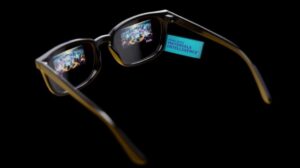The Best Virtual Reality Accessories for Deeper Immersion

Virtual reality accessories are transforming the immersive technology landscape. As VR headsets are growing more advanced, the “add-ons” available to personalize and enhance virtual experiences are also evolving. Today’s VR accessories don’t just include additional straps for comfort or charging systems. They encompass a broad range of powerful tools.
The options are almost limitless, from solutions that engage more of the body’s senses to tools designed to mitigate the issue of VR sickness. If you plan on investing in virtual reality to enhance employee productivity, boost collaboration, or enter the “metaverse,” the right accessories can make all the difference.
So, what types of virtual reality accessories should companies and consumers explore this year? Let’s look at some of the best solutions to unlock new levels of immersion.
The Top Virtual Reality Accessories Available Today
As demand for virtual reality increases, particularly in the business landscape, the accessories available will continue to evolve. Already, the market for VR is expected to reach a value of $165.91 billion by 2030, representing an incredible opportunity for designers and developers.
Some virtual reality accessories are primarily intended to address common problems, like the weight distribution of headsets or maintaining battery power. Others open the door to new opportunities for VR content development, training, and immersion.
1. Virtual Reality Cameras
Ideal for developers and innovators producing their own “metaverse” environments, virtual reality cameras represent an incredible opportunity in the business space. These solutions allow companies to create 3D content for VR apps and experiences more rapidly and effectively.
Combining 360-degree capture with solutions for spatial sound and integrations with tools like Unity, Unreal, and other engines, VR cameras are highly flexible. Companies can even leverage different cameras to collect video from multiple feeds, which can be combined using intuitive software.
As demand for VR in the entertainment and media landscape continues to increase, these cameras will grow more popular in the years ahead. Options range from 360 cameras by Matterport to the GoPro Max 360-degree system.
2. Innovative VR Controllers
Probably one of the most obvious options for companies investing in virtual reality accessories is the advanced controller. VR controllers have grown increasingly intuitive in recent years. They leverage innovative tracking sensors and technologies to provide users with a more natural, comfortable experience. For instance, Meta has introduced a new set of powerful controllers for the Quest 3.
These controllers shift the IR LEDs for tracking movement to the controller’s faceplate, reducing the need for bulky tracking rings. As companies continue to invest in spatial computing solutions, such as AI systems for tracking eye and hand movements, these controllers may become more advanced. Companies like “Tap” are already creating knuckle straps that allow users to interact with virtual keyboards with natural finger movements.
However, it’s worth remembering not every set of controllers will work with every headset. For instance, solutions like the Meta Quest 3 controllers are explicitly designed for Meta technology. At present, companies can’t typically mix and match headsets and controllers.
3. Virtual Reality Accessories for Spatial Sound
Creating genuinely immersive virtual reality experiences requires developers and innovators to consider various senses – not just vision. Spatial audio solutions, for instance, help enhance extended reality experiences by positioning audio around the user in a 360-degree format.
Many of the most advanced VR headsets available today have built-in spatial sound technologies. The Quest 3, for instance, comes with spatial sound capabilities and speakers up to 40% louder than those on previous devices. However, vendors can also allow users to use their virtual reality accessories for audio.
Meta has partnered with Razer to deliver high-performance audio experiences to users who want more privacy in VR landscapes. Elsewhere, companies like Rokid are developing comprehensive spatial computing platforms, which can be enhanced with powerful cinematic speakers.
4. VR Trackers, Sensors, and Base Stations
Tracking technologies comprise some of the most valuable virtual reality accessories for businesses and consumers. They minimize the need for controllers and allow users to interact with content naturally, using gestures and eye movement.
Though many headsets now come with built-in tracking capabilities, there are still VR accessories that can help monitor additional movements. Full body tracking systems can automatically transmit data about the movement of a person’s torso, legs, and arms to an application. This makes it easier to interact with content in a more natural format.
At the same time, it paves the way for the development of more comprehensive, intuitive virtual reality avatars. Sensors and tracking systems like the Vive base station flood a room with non-visible light to help with everything from input accuracy to content positioning.
5. Haptic Gloves and Suits
Though the hype around haptic technologies has dwindled in recent years, innovators are beginning to recognize the benefits of full haptic feedback. Companies like SenseGlove are now introducing more advanced haptic gloves that can offer haptic feedback based on impact and vibrations.
These tools could be excellent in a range of environments. For instance, they can be used to train employees in complex environments, improving muscle memory and unlocking new skills. Some companies, like Meta, are even investing in combining haptic solutions with electromyography hardware capable of detecting minute muscle movements.
Innovators like Tesla are also exploring opportunities to create full haptic suits that offer sensory feedback in various ways. These suits allow users to experience touch sensations, simulations of weight, and even different temperatures when navigating virtual reality spaces. These tools could even be used in the healthcare industry for electrical muscle stimulation during rehabilitation.
6. Virtual Reality Accessories for New Sense Stimulation
While the senses of touch and hearing are being addressed by haptic feedback experts and spatial sound specialists, other senses in VR have largely been ignored. For instance, the sense of smell has yet to be fully implemented into the virtual reality space.
However, some innovative companies have already begun exploring opportunities here. In 2019, FeelReal made waves with its Kickstarter program for a “Multisensory mask.” This mask promised to enhance immersion with both smell and haptic feedback. The innovators said the product would be able to simulate hundreds of smells and the feeling of wind and breezes on a user’s face.
Though this technology has yet to appear on the consumer market, it could represent a new opportunity for the designers of virtual reality accessories. Experiences in the future metaverse environment are likely to be enhanced by using additional senses.
7. VR Chairs and Treadmills
One of the biggest limitations of Virtual Reality is that no matter how immersive a virtual space is, we’re still restricted by our physical environments.
We can only walk or move as far as our room allows. This has led to the development of new virtual reality accessories that address this problem. Companies like Roto VR, for instance, are producing chairs attached to a motor system that allows users to move around more freely when seated while also connecting them with in-app experiences.
For instance, a chair might tilt when an employee learning to use a flight system prepares the virtual vehicle for launch. Solutions like the Virtuix omnidirectional treadmill offer similar benefits. They allow people to walk around freely without actually going anywhere.
These tools promote deeper immersion while reducing some risks associated with virtual reality headsets (such as walking into walls or objects).
8. Virtual Reality Accessories for User Comfort
As the adoption of VR solutions grows, particularly in the enterprise space, companies are increasingly searching for ways to minimize VR sickness, discomfort, and fatigue. Not only are headsets becoming more lightweight, but virtual reality accessories offer users ways to customize their experience.
For instance, Meta offers consumers various strap options designed to improve the fit of their Quest 3 headset. Solutions like the “Elite” strap” can more evenly distribute the headset’s weight on your face for improved comfort. Some solutions even include a built-in battery for longer usage times.
Companies are also experimenting with the cushions and pads available for VR headsets to reduce facial discomfort and muscle strain. Custom solutions, made with memory foam and other innovative materials, make it easier for consumers to wear their headsets for longer, without pain. These simple but valuable accessories could significantly impact future VR adoption.
9. Custom Prescription Lenses
One of the issues that has prevented some users from adopting virtual reality (and other extended reality solutions) in the past is the lack of adaptability. Many initial VR devices didn’t accommodate the needs of people who already wear eyeglasses for vision correction.
This meant many consumers had to wear their glasses underneath headsets, increasing discomfort and damaging the immersive experience. Fortunately, innovators in virtual reality accessories are addressing this issue.
For the production of the Meta Quest 3, for instance, Meta partnered with Zenni to offer custom prescription lenses to consumers. These lenses are specifically designed to adhere to the vision correction requirements of each user.
Custom lenses significantly improve the accessibility of modern VR headsets while reducing issues like VR sickness and fatigue.
10. Virtual Reality Accessories for Battery Power
The power required to run highly immersive virtual reality experiences means most wireless devices can only operate for so long on a single charge. Meta’s Quest Pro, for instance, usually only works for 1-2 hours at a time. For companies that want to invest in VR solutions for comprehensive collaboration and productivity sessions, this can be a problem.
Although many vendors have offered simple power-focused virtual reality accessories in the past, such as charging hubs and cables, new solutions are emerging. Some innovators, like Microsoft, are working on hot-swappable battery packs, ensuring users can stay immersed for longer.
Other companies offer businesses the freedom to switch between wired and wireless modes for their headset, ensuring access to consistent power is always available. There are even external battery packs that can be plugged into headsets to extend their operating power.
11. Covers, Cases, and Maintenance Tools
Finally, while they may not be the most exciting of all the virtual reality accessories we’ve covered so far, covers, cases and other tools for hardware maintenance are extremely valuable.
Specialist cleaning pens and cloths are excellent for minimizing the damage sweat and dirt can do to sensitive systems. Companies can even use disposable face shields to reduce the spread of bacteria and germs when multiple people use the same device.
Some companies also offer removable foam covers for simpler cleaning. Many VR vendors and leaders in the accessories landscape also produce high-quality, durable cases for headset protection. These solutions help minimize the risk of damage to expensive headsets and make transporting equipment easier.
Exploring the Best Virtual Reality Accessories
Virtual reality accessories offer companies and consumers a variety of innovative ways to boost immersion and user experience. From simple solutions designed to enhance user comfort to comprehensive tools that engage multiple human senses, there’s something for every need.
Undoubtedly, as the human race continues its journey towards the future of “metaverse” environments and XR adoption grows, these accessories will only grow more advanced.
Source link
#Virtual #Reality #Accessories #Deeper #Immersion





